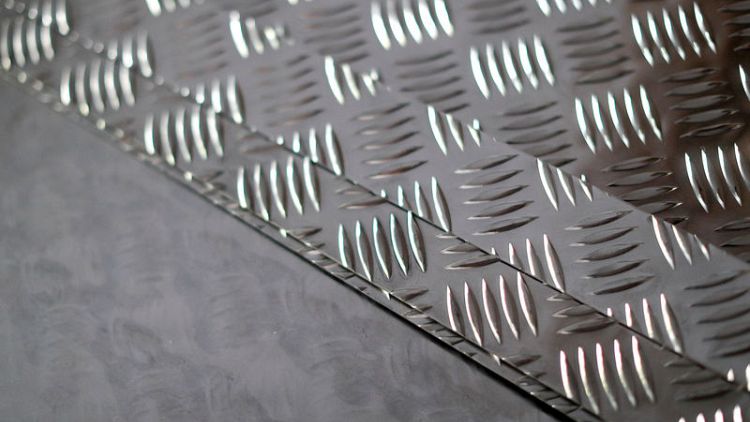By Pratima Desai
LONDON (Reuters) - Aluminium tied up in financing deals and collateral for loans, shortages and inventory draws will sustain prices in the physical market even as funds expecting sluggish demand sell derivatives.
Financing deals involve buying aluminium now and selling it forward for a higher price and profit after storage and interest costs have been deducted. These deals are often on a monthly basis and rolled over, but traders say some recent deals go out to December 2019 and March 2020.
(Graphic: Aluminium spreads, https://tmsnrt.rs/2DWsHc4)
Physical premiums in Europe, paid above benchmark London Metal Exchange prices around $1,800 (1,384.4 pounds) a tonne, fell to $60 a tonne early January in anticipation of the removal of sanctions on Russian aluminium giant Rusal.
However, expectations that Rusal's aluminium would flood the market were disappointed and the European premium climbed to above $90 a tonne, with some traders citing agreements near $100 a tonne. It now stands at $87 a tonne.
"European premiums picked up because people were prepared to hold metal in financing deals, not because demand in Europe has really improved," said ICBC Standard Bank analyst Marcus Garvey.
Traders say a similar picture can be seen in Japan where consumers of aluminium, used in transport and construction, saw premiums for April to June jump to $105 per tonne up about 27 percent from the previous quarter.
(Graphic: Aluminium premiums, https://tmsnrt.rs/2DYZhdh)
Premiums in the United States are holding near $400 a tonne due to low stocks, which are below 500,000 tonnes from near 1.5 million tonnes in 2017, and due to producers looking to cover the 10 percent tariffs on U.S. aluminium imports.
Total inventories around the world are estimated to have tumbled below 10 million tonnes from 14 million tonnes in 2015 as deficits led to stock draws to fill the gap.
The trend can be seen in aluminium stocks in LME approved warehouses at 1.27 million tonnes, down nearly 50 percent since January 2017.
(Graphic: LME aluminium stocks, https://tmsnrt.rs/2LwDLmr)
Stocks in Europe were 2 million tonnes at the end of 2018 from nearly 5 million tonnes in 2014, CRU Group analyst Eoin Dinsmore said, adding that stocks in China were 5 million tonnes at the end of last year and 2 million tonnes elsewhere in Asia,
Dinsmore said the global deficit this year would be 1.5 million tonnes, a gap that will have to be closed by drawing on inventories.
One reason for the gap is rising consumption, particularly in China.
China is the world's largest aluminium consumer. It is also the world's largest producer accounting for 57 percent of global output estimated at more than 64 million tonnes in 2018.
(Graphic: China aluminium exports, https://tmsnrt.rs/2DWtpWC)
"Supply growth is levelling off, particularly in China, where new capacity can only be added if old capacity of equivalent tonnage is closed," said Societe Generale analyst Robin Bhar.
"The global economy appears to be hitting a soft patch and that is going to hit demand for aluminium, that's why the funds have been selling," Bhar added.
Three-month aluminium fell to $1,784 a tonne on Thursday, the lowest since January 2017, down more than 30 percent since a seven-year high of $2,718 a tonne hit in April 2018.
(Graphic: China PMI vs aluminium prices, https://tmsnrt.rs/2DSCEHt)
(Reporting by Pratima Desai)



